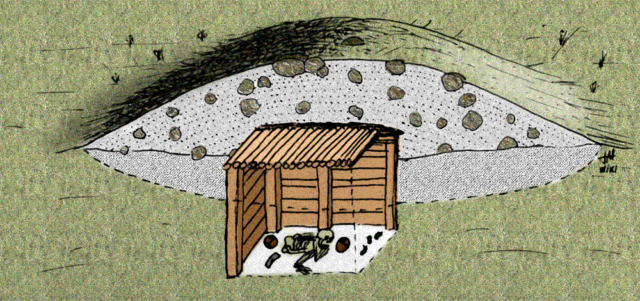Revered by the ancient Greek historians as ferocious fighters and meticulous warriors, the Scythians, or “Saka” tribes, gained reputation and excellent combatants in the ancient world.
In a recent discovery, archaeologists have uncovered a burial site of one of the warriors from the Scythian tribes that roamed the Eurasian regions some half a millennium before the birth of Christ.
There is not much known about the customs of these ancient tribes apart from the fact that they had great admiration for Gold ornaments and other jewelry items.
This veneration of adornment is directly linked with the pride and superiority that these warriors enjoyed all through their reign in the region.
The remains of the warrior king discovered in the tomb reveal that the individual was buried with a gold covered cloak and other significant artifacts. The tomb was discovered to be some 2500 years old and is located in southern Russia in Altai Territory.
Another astonishing find in the tomb was the remains of the king’s horse; along with other belongings such as a warrior sword specific to Scythians kings called ‘Akinak’, a knife in the shape of a chisel made out of bronze, and other big and small pieces of metal.

The king presumably had been buried with some portion of his funeral meal; fragments of lamb bones are also unearthed from the cave.
The gold fragments on the king’s cloak astonished the archaeologists, the only part of the unearthed artifacts that was fully intact and free of any major wear and tear.
The tomb was discovered in the outskirts of an Altai Territory village called Krasny Yar in southern Russia. The region is mostly dependent or farming, and it’s the farming that has almost obliterated the ancient site due to excessive plowing over the burial mounds.
However, this specific tomb and remains buried within it were miraculously protected by a stone ring that served as a shield to the external impact.

The reign of Scythian warriors spans a period from 9th century BC to 4th century AD. These were originally Nomads from the present day Iranian region, who roamed the Eurasian steppes and eventually carved their own small kingdom out of the region that at one time kissed Roman boundaries on one side while holding back Turkic tribes, Middle Indians and Parthians on the other.
The recent discovery is highly significant according to the archaeologists working on the site, who explained that the findings will shed light on the wider customs of the warrior tribes that were previously only known for their elaborate ornaments and fierce fighting skills.
There was very little knowledge available regarding the funeral rituals of the Scythians. Therefore the recent tomb findings will clear the fog surrounding the customs and beliefs of Scythian rulers and people.